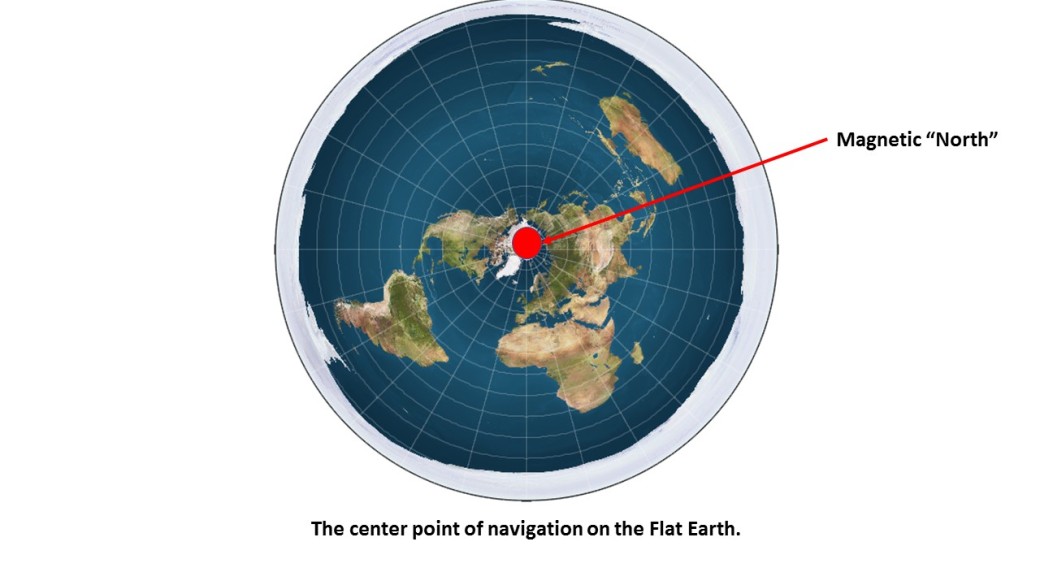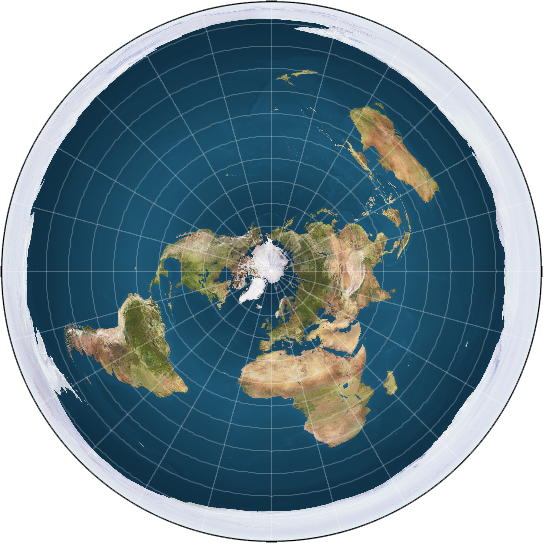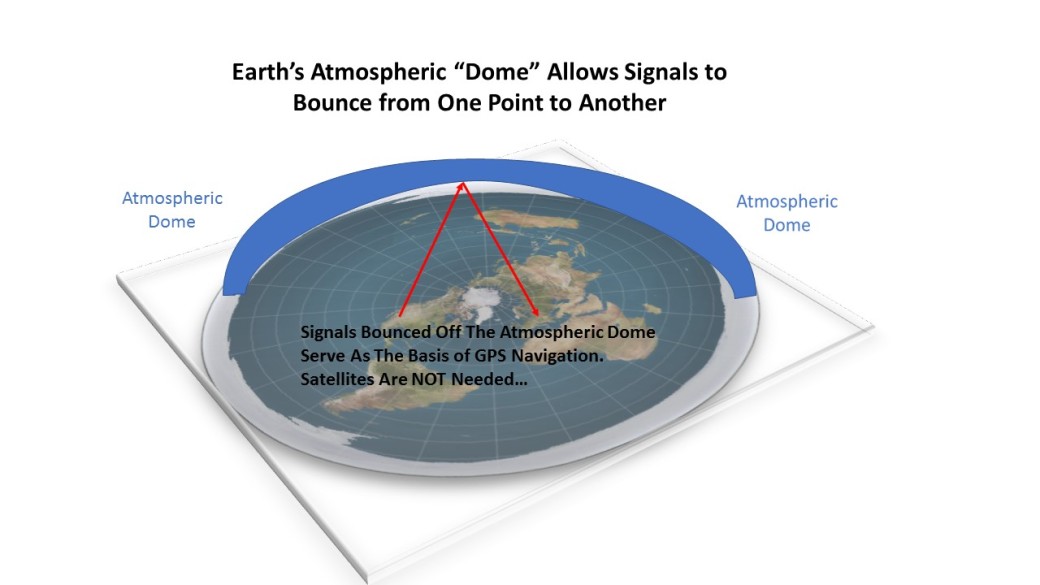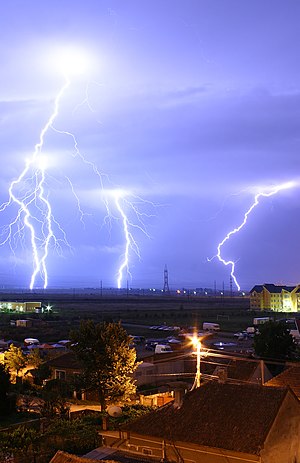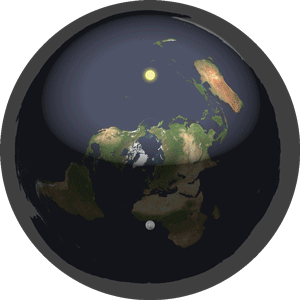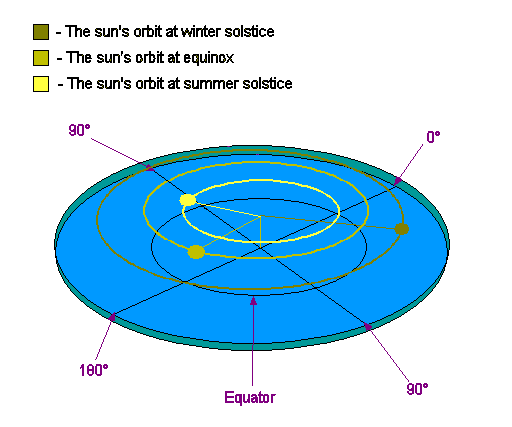Question: “So earth is just some sort of giant Frisbee?”
Kind of. Before you laugh, realize that earth being the shape of a Frisbee is no more humorous than the idea that it is a giant beach ball.
That being said, most of you probably think of the Flat Earth as iconic images like this one:

This is a generalized representation of what the earth would look like if viewed from above (way above). But remember, the Flat Earth is a three dimensional object. The only thing “Flat” about it is the upward facing surface we all live on. And even that is uneven with changing elevation and topography. As a whole, the earth is a three dimensional cylinder. Roughly speaking, it looks like this:
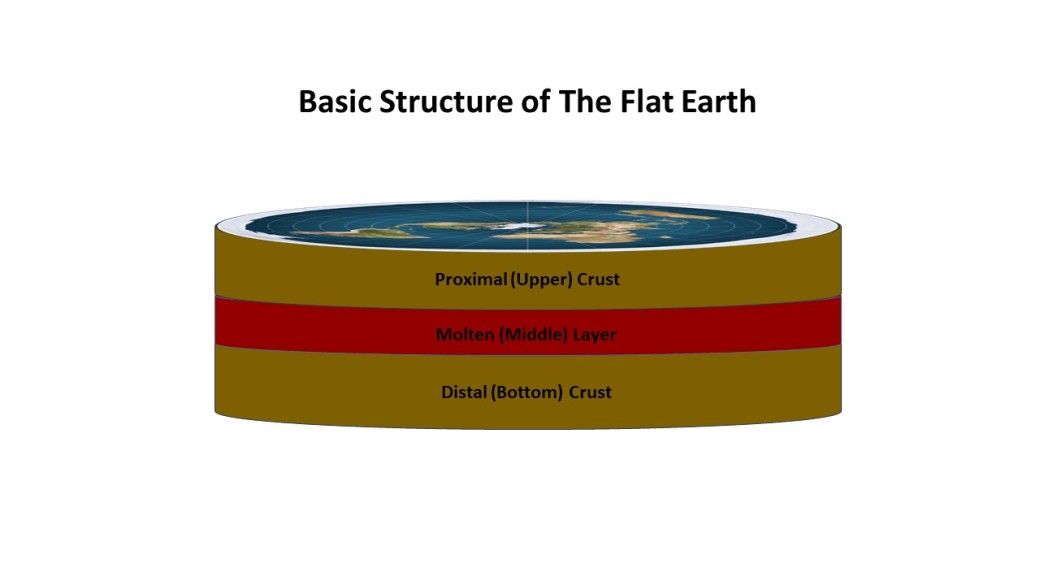
It is comprised of a Proximal (upper) crust, Central (middle) molten layer, and Distal (bottom) crust. The entire structure is held together by an encasing of ice thousands of miles thick.
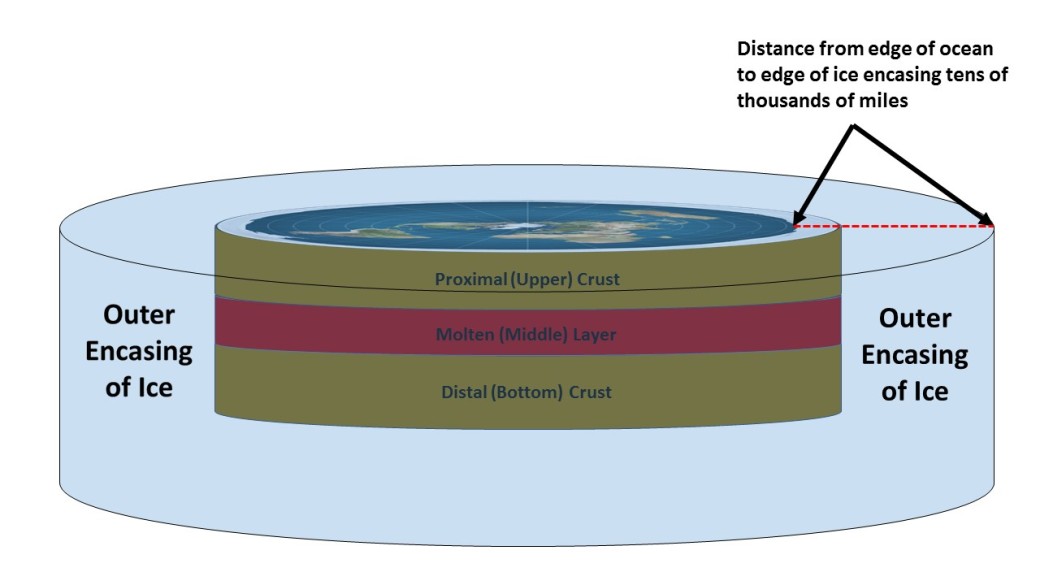
If it weren’t for the sun, Earth would be completely encapsulated in ice.
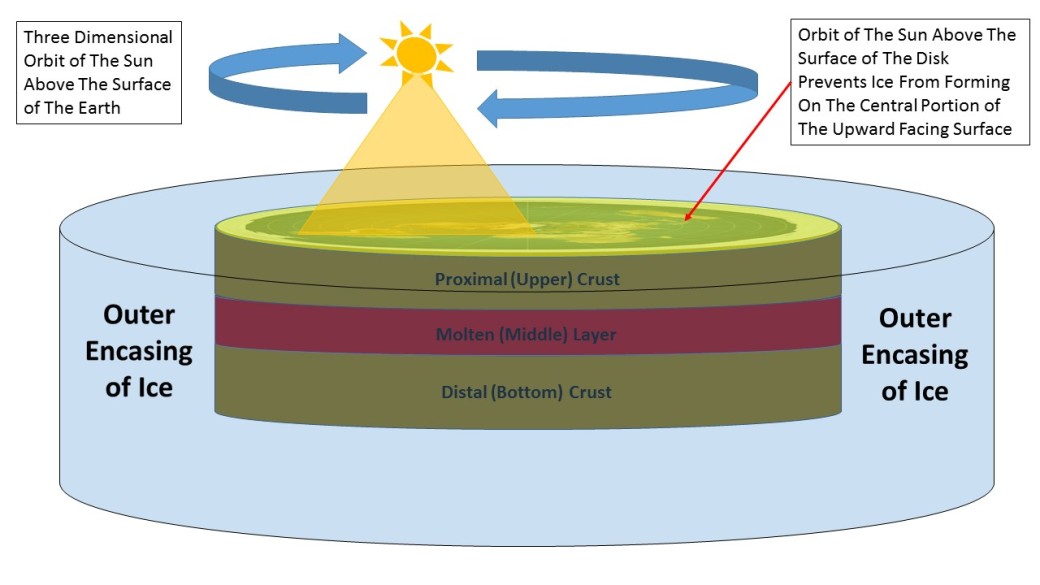
The warmth generated by the sun holds back the ice across the habitable surface and generates a dome like atmosphere from the resulting meteorological forces. In Planar Models of the Earth it is important to remember that the sun is smaller and much closer to Earth, and orbits above its surface. The sun’s orbit (as well as the structure of Earth itself) is caused by Universal Acceleration, as well as the Obligate Tendency Towards Downward Motion. The Obligate Tendency is a universal maxim which holds that all unsupported material objects will fall downwards through the void of space, unless acted upon by a force. Universal Acceleration drives the constant upwards motion of the earth. This force is resisted by the Obligate Tendency, making Earth the focal point of constant strain between the two forces. The resulting pressure produces the structure illustrated below:
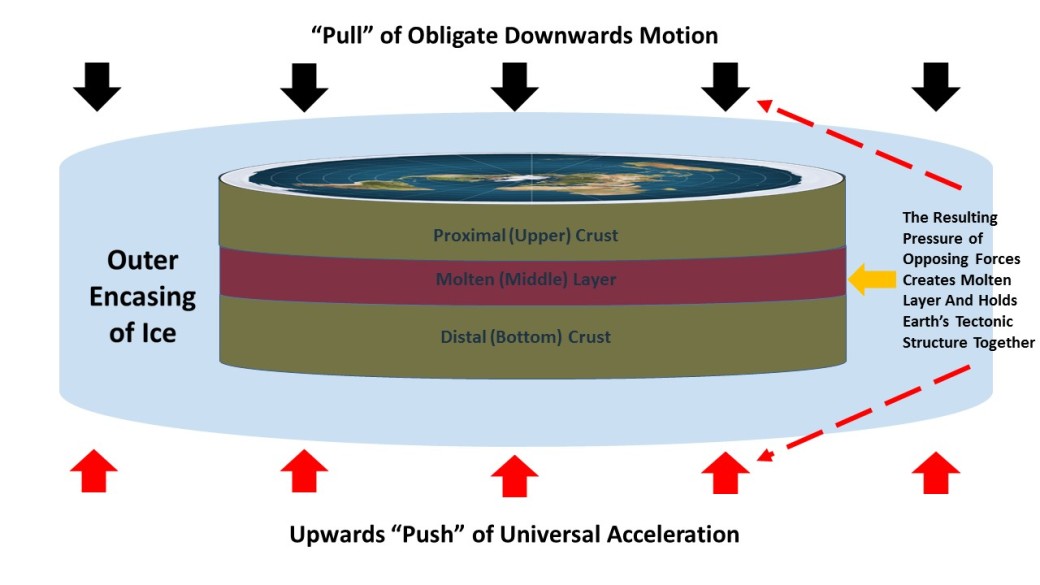
The sheer strain of these forces pressurizes the molten layer, while the massive amounts of ice in the Outer Encasing holds the molten layer in. Yes, the lava melts through some of the ice, but eventually it causes the molten layer to cool and harden along the outer portions that contact the ice. Complex interaction of these and other forces support the larger geo-structure we call home. While Earth is not a ball, it is definitely not simple either. And understanding its actual form should spur the curiosity of anyone willing to look beyond the curved and twisted horizon of round earth dogma.


